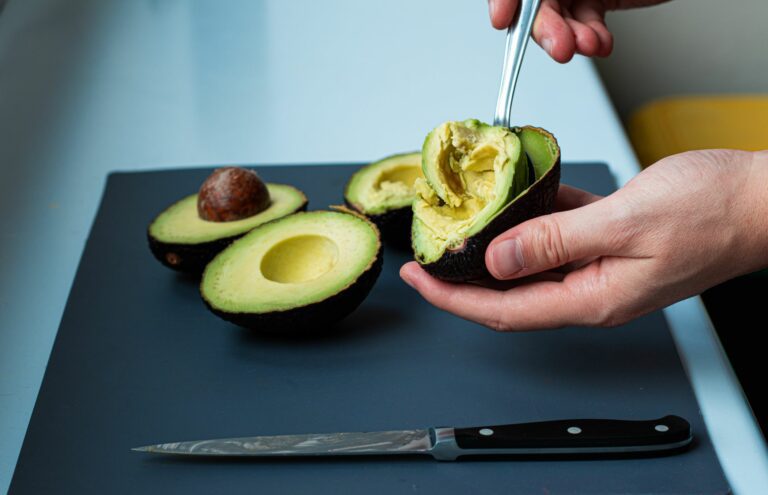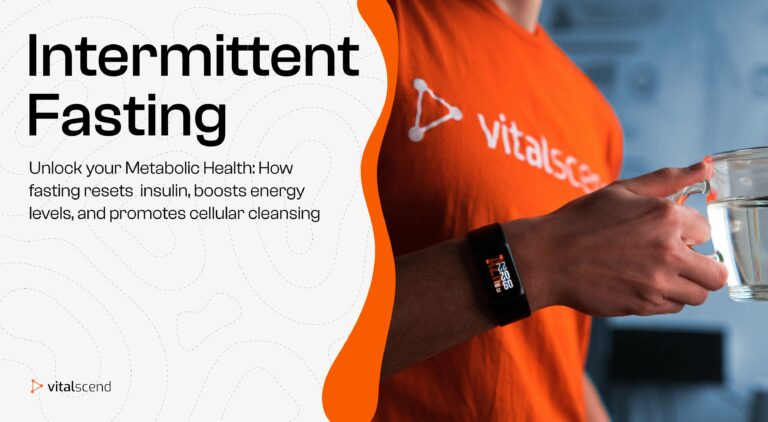9 Fasting Tips: Master the art of Fasting
Fasting is one of the most powerful reset buttons for our bodies. From enhancing mindfulness in monks to being the most used tool for metabolic reset in the modern biohacker toolkit, fasting deserves praise. How can such a cheap easy and convenient thing do so much?
When food was a scarce resource, humans would eat large quantities of food just to be able to survive for longer. But nowadays calories are all around us. We’ve become used to eating so much that our bodies are in a constant state of inflammation. (1) (2) Due to our preinstalled biological drive for energy conservation, the body wants more food so it can survive longer. But what happens in periods of overeating is your body becomes less metabolically efficient to produce energy from the calories you eat.
Fasting by extending the period of not ingesting food acts as a sort of internal detox. The science behind the benefits of fasting is quite clear. It helps hit the reset button on our metabolism, thus improving metabolic health. (3) (4) (5) As a consequence of this, our energy levels can increase, fatigue reduces, and inflammation drops.
So what are some of our top nine tips to make fasting more sustainable?
9 Fasting Tips
With so many different fasting protocols to choose from, it can be overwhelming to know where to begin. Never fear, as we have some incredible strategies for optimizing your fasting experience and making it an absolute breeze.
1. Choosing the right fasting protocol
There are various options to consider when selecting a fasting protocol, including intermittent fasting, where individuals alternate between periods of eating and abstaining from food and longer periods of water-only fasting. Popular intermittent fasting protocols include the 16/8 method, where individuals fast for 16 hours and eat during an 8-hour window. This is one of the most convenient and culturally acceptable ways to fast, as we can only skip breakfast (or dinner).
Then there’s the 5/2 method, where we eat normally for 5 days and fast for 2 non-consecutive days. On “fasting” days less than 25% of total calories are consumed, thus creating a stronger caloric deficit. The second one is more used for detox purposes, and is less sustainable, as it’s slightly less stable in terms of glucose and energy drops. It’s important to choose a protocol that fits one’s individual schedule, which leads us to tip #2.
2. Pick a Fasting Schedule
Skipping dinner or skipping breakfast, what’s better? This is one of the most common questions fasters have. The answer depends on your work schedule, social events, and personal goals. Most fasters choose to skip breakfast due to the alertness-promoting effect of fasting. This translates to better mental clarity, sharper focus, and smoother cognition, especially during most people’s productivity time blocks.
However, for those who value breakfast as the most important meal of the day, and late dinners disrupt sleep or aren’t preferred due to other reasons (acid reflux), skipping dinner might do the trick. Experimenting with different protocols can help individuals determine what works best for them.
3. Add Electrolytes
Electrolytes are mineral salts that help support numerous processes in your body. During extended fasting, your metabolism still works, trying to use energy differently. This can reduce certain electrolytes in your body, such as potassium, magnesium, chloride, and sodium. (6) These are important in maintaining fluid balance, neural transmission, muscle activation, bone strength, and regulating pH levels. (7)
Your body shifts to using ketones for energy, which helps excrete more potassium and sodium with it. Running off minerals can result in headaches, dizziness, and brain fog – to sum it up, fatigue. This is why adding electrolytes to the mix is essential. And no, they contain no macronutrients, so your fasting and autophagy aren’t interrupted.
4. Use an app to track fasting periods
Fasting apps remind you when it is time to eat and stop eating. Additionally, you can log your food intake so you know exactly when you stop eating. Numerous health trackers like fit bands and smartwatches allow this as well. As most people underestimate their eating window, it’s important to track and see exactly when you’re eating your last meal. And yes, even a sip of wine or a bite of chocolate breaks a fast.
Many individuals find it helpful to track their fasting progress with an app. These tools often have features like reminders, progress tracking, and community support to help individuals stay motivated and on track. Some popular options include Zero, MyFitnessPal, and LifeOmic.
5. Start slowly: give your body time to adapt
Starting slowly: Individuals new to fasting need to ease into the practice gradually. The body may take some time to adjust to the new routine, so starting with shorter fasting periods and increasing the duration over time can help individuals become more comfortable with fasting.
One common mistake for a person not habituated to fasting is expecting that energy levels will increase right away. The body needs a transitory period to start using fats for fuel. Once it does, energy is much cleaner. The brain focuses sharper and we’re less hyperactivated. But getting used to it is key, and some people do this by pushing their breakfast for 1 hour each month until they get to the optimal time which is around 12 am for most. Once the body gets used to not eating at 8 pm every morning, the hunger cravings go away.

Tips for overcoming hunger and cravings
Hunger and cravings can often be a major obstacle in maintaining a healthy diet and reaching weight loss goals. However, with a little bit of planning and self-control, it is possible to overcome these challenges and make progress towards a healthier lifestyle. Here are some strategies and tips for overcoming hunger and cravings during fasting.
6. Stay hydrated
A lot of times our hunger craving comes as a result of dehydration. What the body actually needs is more water or minerals, not necessarily food. Oftentimes, thirst signal is misunderstood for hunger (8) and we start eating more by default. Instead, a good trick is drinking a large glass of water, and observing one’s hunger. Staying hydrated is therefore essential to keep your body running at an optimal level. Water helps flush toxins out of the body, and can also curb hunger and prevent overeating.
7. Eat protein and fiber-rich foods
Eating only carbohydrate-rich foods will lead to hunger more frequently. Fats or lipids can greatly increase satiety and lengthen the time in which we extrapolate energy from food. Protein additionally helps to stabilize glucose variability and insulin levels.
Put simply, eating a large bowl of rice, equaling the calories of that bowl of rice combined with avocado and steak, the second bowl with protein and fats will keep you more satiated for longer. Besides adding fats and proteins to your plate, eating fiber-rich foods is a good trick. Fiber, especially soluble fiber attracts water and forms a gel, thus slowing down digestion. Incorporating some complex carbohydrates like whole grains, lentils, beans, and leafy vegetables is a great starting point.
8. Regular sleep schedule
A regular sleep schedule is another key factor in managing hunger and cravings. When we are sleep-deprived, our bodies may crave sugary, high-fat foods to give us a quick energy boost. Poor sleep leads to an imbalance in two hunger-related hormones ghrelin and leptin. It increases ghrelin, making you hungrier, and decreases the secretion of leptin. This way poor sleep can imbalance hunger hormones leading to overeating or bad food choices. (9) (10) By getting quality sleep consistently, we can help regulate our appetite and make healthier food choices.
9. Be mindful when eating, or when hungry
Hungry or Hangry? Food is commonly used to reduce stress. This signal is solid, especially at night time when our discipline runs off. Our battery is drained and we need a quick boost of energy. All of a sudden, cookies look much more attractive, soothing the stress. However, it’s important to listen to our hunger cues to understand if there’s a problem underneath we’re trying to soothe with food.
Practicing mindful eating can be a helpful tool in overcoming hunger and cravings. This involves paying attention to our body’s hunger and fullness cues and eating slowly and deliberately. By eating mindfully, we can tune into our body’s natural hunger and fullness signals, which can help prevent overeating and make it easier to manage cravings. An important factor is eating slowly, because by doing so, we can feel the satiety cues, earlier on.
Conclusion
Overall, staying hydrated, incorporating protein and fiber into our diet, maintaining a regular sleep schedule, and practicing mindful eating are all effective strategies for overcoming hunger and cravings. 16:8 fasting is more convenient and stable than 5:2, so the main decision is whether to skip breakfast or dinner. By implementing these tactics, we can take control of our cravings and work towards a healthier, more balanced lifestyle.








